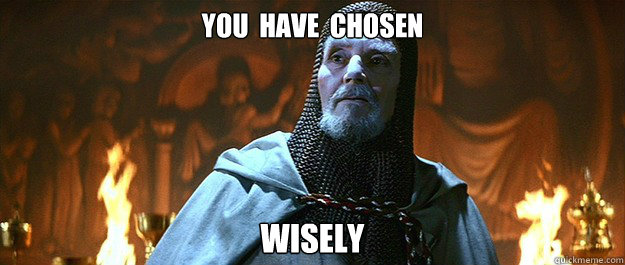Choosing the Right MBA Program: Don’t Make This Mistake
November 01, 2019 :: Admissionado Team
If you’re in the process of choosing the right MBA program to apply to, you’ve probably got a mountain of questions threatening to create a mental avalanche in your head… Better close those blinds. Migraine’s coming. There’s selectivity (Can I get in?), affordability (Can I pay for it?), flexibility (Can it work with my schedule?), location (Can I live there long-term?)… And of course, the grandaddy of all MBA decisions – fit. There’s been a lot of talk about “fit,” and the idea is that choosing the right MBA program means picking one that most aligns with your career goals. That makes sense, right?
WRONG.
Prioritizing “fit” is the biggest mistake you can make when choosing the right MBA program for you. You’ll improve your chances of getting into b-school AND your opportunities post-b-school if you follow one simple rule – “Go to the best school you can get into.” We’ll repeat this again.
“Go to the best school you can get into.”
Everyone on board? Good, let’s break it down.
First of all, we want to make it clear that we’re not asking you to ignore fit completely. That’s not what we’re saying. An MBA is a huge investment of time and money, and you should take the time to reflect on your goals and try to find a school that will best help you meet those goals.
But what we ARE saying is not to give “fit” more weight than it deserves. We see this ALL the time. Steven, marketing guru, focuses only on Kellogg simply “because it is the best for marketing,” crossing other great schools like HBS or Stanford off the list. MBA programs tend to get categorized into certain industries – Stern is “known for” banking and Wharton is “known for” finance. But just because a school is “known” for something doesn’t mean that’s all they do. The truth is that in the end, every top school will prepare you for whatever it is you want to do post-MBA.
For example, everyone always thinks they need to go to Stanford to get into the tech, but that’s not the case. In a recent article from Poets & Quants, looking at the top 25 tech firms, Wharton, Kellogg, and Harvard all beat out Stanford for the number of alums in senior leadership in Silicon Valley. According to these stats, schools not “known” for tech are the ones dominating the industry. So if you want to become a titan in tech, you’ve got just as good a chance of climbing to the top whether you go to Wharton or Stanford. Going to a top school can get you wherever you need to go.
More important than “fit” is that you know what you want out of the program. In an interview, Alladi Venkatesth, Associate Dean of Masters Programs from the Paul Merage School of Business at UC Irvine, explains that top schools will all have the same core courses, from which students can develop their business vision. But a lot depends on the student. He says, “It is not so much which program you select, but rather what you are seeking to get out of it.”
Plus, sometimes it’s better not to “fit” in. Remember that schools are looking for diversity. Kellogg needs bankers just as much as Stern does. In fact, with a different background, you might actually stand out from all the applicants, and post-MBA, getting a banking job from Kellogg will be even easier than it would be, in many ways, out of Stern. Just imagine how much less competition there will be!
So then how should you be choosing the right MBA program?
1. Do your research
Figure out how these programs will help you reach your goals, but don’t get stuck on what the program is “known” for. Look at the MBA experience as a whole. Will this program not only give the you the right skills, but also the right network, resources, and support that you need? How will the school’s ranking and reputation come into play? Get to know these programs inside and out. (This will also come in handy in your apps when you have to demonstrate your knowledge of the program so you can show why THAT program is the best for you)
2. Be realistic with your profile… but also take a chance.
Once you’ve done your research, you’ll have a better understanding of where you stand what schools you should target. But don’t throw a school out just because you don’t fit some perfect mold there. This process is subjective. We hear time and time again from admissions officers that schools are looking for PEOPLE, not PROFILES. If your schools are lower than the average or you’re older than the average, it doesn’t mean you won’t get in. And that’s why you need to…
3. Play the numbers game.
Apply to a nice mix of schools, which means casting a wide net. You never know what’s going to happen (this process is HIGHLY subjective, after all), so you have to mix things up to increase your chances. While the GMAT is never the end all be all reason someone gets in or doesn’t get into a school, it IS a good indicator of candidacy. A reach school is one where the average GMAT is above yours (or a HIGHLY competitive school in the top 3 – those are a reach for eeeeveryone). Mid-range is where your GMAT falls in line with the average for the school, and a safer option is one where your GMAT is above the average. We recommend applying to at least 7 schools (more for indian applicants), and going with 2 reach, 3 mid-range, and 2 safe. Having a smart school selection strategy is key, as schools are getting more competitive.
4. Go to the best school you can get into.
Yeeeaaaahhhhh, you got this one.

Ready to make that list? Here’s some resources to help you out:




